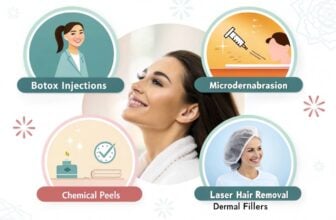Did you know that nearly 75% of adults use some form of vision correction? That’s a pretty eye-opening statistic! Our eyes play such a crucial role in our daily lives, yet they often don’t get the attention they deserve.
Regular eye exams are essential not just for keeping your vision sharp, but also for safeguarding your overall health. These check-ups can detect early signs of eye conditions like glaucoma or cataracts, and even systemic health issues such as diabetes and high blood pressure. By catching these problems early, you can take steps to manage them before they become more serious.
In this article, we’ll break down how often you should have eye exams based on your age, lifestyle, and health conditions. You’ll learn about the recommended frequency for different age groups, factors that might influence the need for more frequent exams, and signs that you might need an eye exam sooner than you think. So, let’s dive in and ensure your eyes stay healthy and your vision clear!
Recommended Eye Exam Frequency by Age Group
Children and Teens
- First Eye Exam: When to schedule the first appointment
It’s recommended that children have their first comprehensive eye exam at six months of age. This early check-up ensures that their eyes are developing correctly and can catch any issues that could impact their vision as they grow. - School-Age Recommendations: Frequency during school years and adolescence
After the initial exam, kids should have another eye exam at age three and just before they start school (around age five or six). During school years, eye exams should be scheduled every one to two years. This frequency helps catch any vision changes that might affect their performance in school and overall development.
Adults (20-40 years)
- General Guidelines: Standard frequency for healthy adults
For adults in their twenties and thirties, it’s generally recommended to have an eye exam every two years if they have no symptoms or risk factors. These exams help to monitor for any gradual changes in vision and maintain eye health. - Special Considerations: When to visit more often
Adults with certain risk factors, such as a family history of eye disease, high blood pressure, or diabetes, should consider more frequent check-ups. Also, those who experience changes in vision or eye discomfort should not wait for their next scheduled exam.
Adults (40-60 years)
- Midlife Vision Changes: Increased frequency to monitor age-related changes
As we hit our forties, our eyes undergo noticeable changes, including the onset of presbyopia (difficulty focusing on close objects). Adults in this age range should have an eye exam every one to two years to monitor for changes and detect early signs of age-related eye conditions. - Specific Conditions: Watching for conditions like glaucoma and cataracts
During midlife, the risk for conditions like glaucoma, macular degeneration, and cataracts increases. Regular exams help in early detection and management of these conditions, ensuring better long-term eye health.
Seniors (60+ years)
- Annual Exams: Importance of yearly check-ups
For seniors, annual eye exams are crucial. As we age, the risk for serious eye conditions rises, and yearly check-ups can help manage these issues more effectively. - Age-Related Eye Conditions: Common issues to monitor
Seniors should be particularly vigilant about conditions such as cataracts, glaucoma, and macular degeneration. Regular exams not only help in early detection but also in managing these conditions to maintain quality of life.
By following these guidelines, you can ensure your eyes are regularly monitored and any potential issues are addressed promptly, helping you maintain clear vision and overall eye health throughout your life.
[Read: What to Expect During an Eye Exam]
Factors Influencing the Frequency of Eye Exams
Family History
- Genetic Predispositions: Conditions that might necessitate more frequent exams
If you have a family history of eye conditions such as glaucoma, macular degeneration, or retinal detachment, you may need to schedule eye exams more frequently. Genetic predispositions can significantly increase your risk, and early detection is key to managing these conditions effectively. Regular check-ups will help your optometrist monitor your eye health closely and catch any early signs of inherited issues.
Health Conditions
- Diabetes, Hypertension, etc.: How systemic health issues impact eye health
Systemic health issues like diabetes and hypertension can have a profound impact on your eye health. Diabetic retinopathy, caused by damage to the blood vessels in the retina, is a common complication of diabetes. Hypertension can lead to hypertensive retinopathy, which affects the retina and can cause vision problems. If you have any of these conditions, your doctor will likely recommend more frequent eye exams to monitor for related eye issues and manage them early.
Occupational Hazards
- Screen Time and Eye Strain: Jobs that require more frequent exams
If your job involves long hours of screen time, you might experience digital eye strain, which includes symptoms like dry eyes, headaches, and blurred vision. Occupations that require extensive near work, such as reading or detailed craftsmanship, can also strain your eyes. In these cases, it’s wise to have eye exams more often to ensure your eyes are coping well with the demands of your work and to get advice on mitigating eye strain.
Lifestyle Choices
- Smoking, Diet, and Exercise: Lifestyle factors affecting eye health
Your lifestyle choices can have a significant impact on your eye health. Smoking, for instance, increases the risk of cataracts, macular degeneration, and optic nerve damage. A poor diet lacking in essential nutrients like vitamins A, C, and E can also affect your vision. On the other hand, regular exercise can reduce the risk of age-related eye conditions. If your lifestyle includes risk factors like smoking or poor diet, more frequent eye exams can help catch and address any arising issues early.
By considering these factors and adjusting the frequency of your eye exams accordingly, you can maintain better eye health and catch potential issues before they develop into more serious problems.
Signs You Might Need an Eye Exam Sooner
Vision Changes
- Blurriness, Double Vision, Floaters: Common signs to watch for
If you notice sudden or gradual changes in your vision, such as blurriness, double vision, or floaters (small dark shapes that drift across your vision), it’s a clear signal that it’s time for an eye exam. These symptoms can indicate a range of issues from simple refractive errors needing glasses to more serious conditions like retinal detachment or macular degeneration. Early detection and treatment are crucial to preventing long-term vision problems.
Eye Discomfort
- Pain, Redness, Irritation: Symptoms that shouldn’t be ignored
Persistent eye discomfort, including pain, redness, or irritation, should never be ignored. These symptoms can be indicative of eye infections, dry eye syndrome, or even inflammation such as uveitis. Getting an eye exam sooner rather than later ensures that any underlying issues are diagnosed and treated before they worsen.
Headaches
- Frequent or Severe: When headaches signal eye issues
Frequent or severe headaches can be a sign of undiagnosed vision problems or eye strain. If you find that your headaches are accompanied by visual symptoms like eye strain or blurriness, it’s a good idea to schedule an eye exam. Conditions such as astigmatism, presbyopia, or even more serious issues like glaucoma can contribute to headaches, and an eye exam can help pinpoint the cause.
Difficulty Seeing at Night
- Night Vision Problems: Indications of underlying eye conditions
Struggling to see clearly at night or in low-light conditions can be more than just an inconvenience—it can signal underlying eye conditions such as cataracts, retinitis pigmentosa, or vitamin A deficiency. If you experience increased difficulty with night vision, it’s important to have an eye exam to identify and address the issue promptly.
By paying attention to these signs and seeking an eye exam sooner when they arise, you can catch potential eye health problems early and take steps to maintain clear, healthy vision.
Conclusion
To wrap things up, let’s recap the key points we’ve covered. Regular eye exams are crucial for maintaining overall eye health and catching potential issues early. From children having their first eye exam at six months to seniors needing annual check-ups, each age group has specific guidelines to follow.
Factors like family history, existing health conditions, occupational hazards, and lifestyle choices can also influence how often you should see your eye doctor. Remember, signs like vision changes, eye discomfort, frequent headaches, and difficulty seeing at night should prompt you to schedule an eye exam sooner rather than later.
So, what’s next? Make it a priority to schedule your next eye exam and stay proactive about your eye health. Keeping up with regular check-ups can make a world of difference in maintaining clear vision and catching any potential problems early.
In the long run, maintaining regular eye exams is an investment in your overall well-being and quality of life. By taking these steps, you’re ensuring that your vision stays sharp and your eyes remain healthy for years to come. Stay vigilant, stay healthy, and keep seeing the world clearly!





